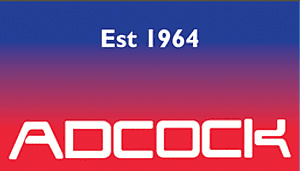Summary
Adcock Refrigeration and Air Conditioning Ltd is an award-winning family business which was founded in 1964. Adcock operates from 12 fully serviced centers and employs over 230 people, over half of which are highly skilled engineering staff. Adcock has a wide and varied client base including commercial buildings, health, public sector, education and manufacturing and delivers unrivaled expertise in air conditioning, ventilation and heating systems for all environments – as well as refrigeration, process cooling and cold storage systems for specialist applications.
Adcock self-adopted Microsoft Office 365, and Yammer fast became the tool of choice for local and national communication with engineers and office staff. However, the teams quickly found that Yammer was not going to work well as a document management solution. After identifying the need for SharePoint Online, they reached out to Business Cloud Integration for help.
Challenge
With a need to connect employees in multiple branches with one document management solution, Adcock’s key challenges with their existing solution were accessing and locating current document versions, replacing SANs for branch specific document management, and automating specific business processes. In addition, the company needed a solution that would allow the group’s engineers, who were not currently licensed to use Office 365, to access installation project information, as well as service and maintenance documents.
Strategy
Adcock worked with Business Cloud Integration to design and deploy a new document management solution. Business Cloud Integration built Adcock a new Intranet using their Casper365™ Office 365 and SharePoint automation platform.
Architecture & Design – Business Cloud Integration designed the Intranet using modern hub sites, specific branch pages, and private working site collections. Project work needed a specific templated approach, as well as document availability across different types of users. In addition, group services and functions are controlled centrally and needed a simple permissions model to prevent access to confidential documents. The key to the design was scalability with new branches designed to be re-deployable template sites to allow the group to expand without further development.
SharePoint Online – They exported Yammer data to a secure site collection using PowerShell for the internal team to further relocate to the appropriate sites. SharePoint Modern sites provide simple to use and user-friendly pages. Business Cloud Integration co-created them with the Adcock team to best use the page features without a heavy dependency on copy-writing. SharePoint Site Collections were used for each branch with Custom SPFX webparts deployed into the App catalogue and the Casper365 automation service used for future branch deployment of sites, assets and styling.
PowerApps – The team developed a sickness and return-to-work app to manage the whole group’s attendance and enable reporting on it. This replaced a pdf form, simplifying the process of reporting absences and increasing the early notification of them to allow for contingency planning.
Microsoft Flow – They deployed approval and sickness PowerApps notification processes in Microsoft Flow. In addition, Microsoft Flow was used to automate the correct filing of incoming documents from engineers using the group’s GreenTree ERP system, which saved documents to local file systems using a known naming convention.
Results
Adcock now has a full Intranet solution, and they have replaced NAS storage drives with SharePoint Online. IT time has been reduced in managing NAS drives, information is more easily located, and the business can operate and collaborate better than ever before. Engineers are now licenced users, able to access installation and maintenance documents remotely as needed.
As the business grows, additional branches can easily be added and project sites can be deployed by the internal team using Casper365™ without further intervention from a SharePoint admin or development team.

